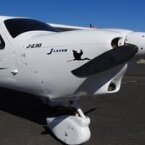the manufacturer's advice. LOL. leads to over and under tensioning. LOL. My measurements and calculations showed that the mfr method leads ot tension errors of up to 50 %. likely +/-30%.... anyway..... yes, initial stretch temp , temperature dependent.
There's a bit of a compromise between having enough tension with a crankcase temp of say 30 deg C, and having too much at crankcase temp of say , 90deg C. So, still a good idea to take it easy until oil temp up to operating temp (which means crankcase temp , also, pretty much) . If the cold tension is too high, safer to TO with low crankcase temp. If cold tension too low, the opposite...
I don't want to pollute the forum, this is about 914 heads ,just wondered what the stud diameters were. I'll look it up. Looks like 8mm.
I would be confident the Rotax engineers got their stud sizes correct. the rest is left to tolerances and install .....




